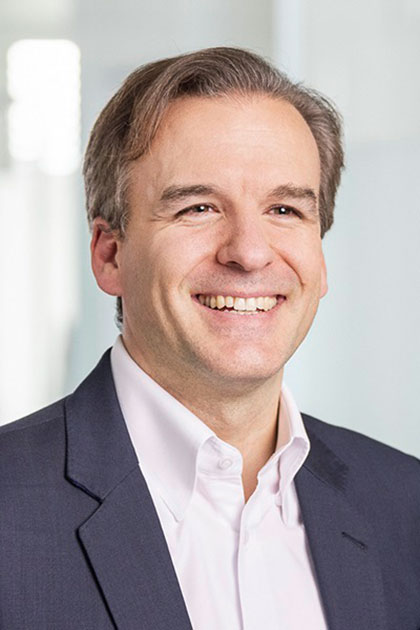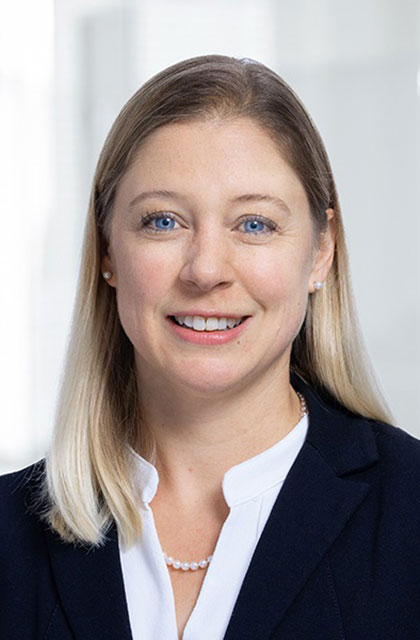Mobile Working – A Balancing Act
The coronavirus pandemic turned many things upside down – including how and where we work. UZH is no exception. Prior to the pandemic, around 86 percent of the total working hours of UZH employees were performed on site at the university. With the lockdown, the majority of UZH staff had to switch overnight to home working. In the process, they discovered that for certain jobs, it was a perfectly feasible option. For many – though not all – it went so well that they got a taste for mobile working. Advantages such as taking a lunchtime walk or a power nap on the sofa are undeniably appealing. Not only that, they could save time and money on commuting, and the negative environmental impact was reduced. Some found they could concentrate better at home.
The pandemic accelerated a trend that was already underway in many businesses – thanks to digitalization, work is no longer always tied to a specific location. UZH responded to these developments, and in May 2022 a new working model allowing employees to divide their working hours between their office or lab and their home in a 60/40 ratio was introduced. Staff are now required to spend at least 60 percent of their working hours on campus, and the other 40 percent can be performed elsewhere (“mobile working”), provided such an arrangement is compatible with their role. A survey carried out by the UZH Center for Leadership in the Future of Work shortly after the introduction of the new working hours model in June/July 2022 found that this split largely met the needs of employees.
Flexibility please
The study also showed that employees wanted flexibility about when they work where, but that this flexibility could make collaboration more challenging. A range of questions has to be dealt with, such as: how can we reconcile the various demands and expectations? When should the team meet? How do we make the workplace somewhere that employees want to spend time? “In the past, you just went to work,” says Thomas Fritz. “Now on-site work has come to have a negative connotation for some employees, so we need to make coming into the office an interesting proposition.”
Informatics professor Thomas Fritz is one of 12 UZH professors who took part in the Future of Work@UZH: Mobile Working pilot project. The aim of the project was to develop recommendations and innovative approaches to remote working. The project, completed in February 2023, was led by Jochen Menges, professor of human resource management and leadership, and Jennifer L. Sparr, instructor and academic associate in the Department for Business Administration at UZH. Jochen Menges’ areas of research are leadership and the role of emotions in the workplace and their contribution to success. One of the issues explored in the current study was how to design working models so that they positively influence how people feel about their work.
Respondents were therefore asked, among other things, how they would like to feel at work and given 20 emotions to choose from. The result was clear: the vast majority want to feel valued. For professors, a somewhat different picture emerged, in particular from the faculties of Arts and Social Sciences, Law, Theology, and Business, Economics and Informatics – they want to feel “focused”. “It seems we need to find a balance between focused work, which is generally best done alone, and the appreciation that employees need to feel, which requires social interaction,” says Menges.
Conflicting goals
Conflicting goals like this are one of the sticking points when it comes to meeting different needs, and holds true for all staff, not just professors. Some people would prefer to work from home all the time, while others enjoy coming into the office as social interaction is important to them. “Employees want both options,” says Jennifer Sparr, “focused work and interaction.” The big question the pilot study tried to answer is: how can the working environment be designed in such a way that employees feel valued and included while being able to work in a focused and concentrated manner? At the end of the day, according to Sparr, it’s about striking a balance that boosts wellbeing alongside productivity. “This balancing act is not the same as making a trade-off or compromise,” she stresses. “Rather, it means we work most productively when we feel good, and we feel good when we are able to be productive. The two are linked and ideally work together in a virtuous circle.”

It seems we need to find a balance between focused work, which is generally best done alone, and the appreciation that employees need to feel, which requires social interaction.
Thinking paradoxically
The study provides three constructive approaches for achieving this balancing act. First, it is necessary to accept that there are no simple, clear-cut answers to the question of how a team best works together. There is no mythical leader who can simply cut through the Gordian knot with one powerful slice of the sword and solve all the problems in one blow. What is actually needed is a “paradoxical mindset”, as Jennifer Spar puts it. This means acknowledging and accepting that conflicting needs and expectations exist, and that these need to be reconciled. Examples of the paradoxes that must be held are: on-site work and mobile work; inclusion and autonomy; stability and flexibility; trust and control. Dealing with such opposites is challenging but stimulating, says Sparr: “The modern world of work is so complex that ‘either/or’ solutions no longer fit, instead we need to think in terms of ‘both and’. This opens up space for new and creative solutions.” The second approach to be adopted when implementing the 60/40 working model is participative leadership. In concrete terms, this means new forms of collaboration are not imposed from above but discussed and developed as a team. For Jochen Menges, this participative approach is the magic ingredient for mobile working success: “Professors or managers should not bear sole responsibility for finding solutions. It’s about defining what you want to accomplish as a team.”
The third approach involves finding ways to boost the positive emotions that make good research and teaching possible. Emotions such as the scientist’s excitement about a new discovery, the scholar’s satisfaction of seeing their work published, or the teacher’s feeling of reward when students appreciate their efforts. With mobile working, it is particularly important to have the opportunity to share these emotions with others.

We work most productively when we feel good, and we feel good when we are able to be productive. The two are linked and ideally work together in a virtuous circle.
Stressed or driven?
Informatics professor Thomas Fritz and his team participated in the pilot project. His experience has been positive throughout. Together, he and his team developed formats and tools to make collaboration easier and more interesting. For example, they instigated shared blocks of time in which all members focused on individual work. They bought two hourglasses for one of the PhD candidates’ offices, one for 30 minutes and the other for 60 minutes. At agreed times, an hourglass was turned over and all the doctoral students in the office began working quietly for the prescribed length of time. To make working in the office more fun and to encourage social interaction, a “social” coffee break was held at the same time every week, as well as a brown bag lunch once a month to discuss questions relating to research methodology. Many other creative ideas also emerged, some suggested by students, which are now being incorporated into research practices, such as the FlowTeams project. FlowTeams provides an app to encourage teamwork and increase awareness of colleagues’ whereabouts and activities. Team members input information about where they are working when, and indicate whether they are open to interaction or focusing on individual work at a given time. Aware of the importance of mental well-being in the workplace, the group also introduced a daily reflective space at the end of each day when team members are encouraged to reflect on their own well-being by answering a few short questions. They can share their current mood with the group by throwing a piece of colored paper into a large glass kept in the office for this purpose – red equals stressed, green means full of energy, blue is calm and yellow so-so. Thomas Fritz is keen to stress that the agreements and processes put in place so far are not set in stone – they will be revisited regularly and adapted where necessary. “It is a time-intensive approach,” he says, “but it is time well spent.”
At home in the lab
In Thomas Fritz’s team, many of the team’s tasks can just as easily be done at home as in the office. With laboratory-based work, such as for veterinarian Thomas Lutz’s team, however, it’s a different story. Part of their research includes conducting animal experiments. As professor of veterinary physiology, Thomas Lutz was keen to get involved in the pilot study because he was interested in whether and how the new working model could be implemented in his team. The answer: “In our case, nothing has really changed.” The PhD candidates and postdocs are generally in the laboratories and offices at the Veterinary Teaching Hospital and in Schlieren on a daily basis. The only person able to do some of their work from home is the administrative assistant. “Discussions in the team revealed that the personal interaction on site was very important for all of us,” explains Lutz. And lab work by its nature has to be done in a laboratory. Hence the basic principle that all team members come to the university almost every day. “Of course, if someone needs a couple of days of peace and quiet to work on their dissertation or to write a paper, they are welcome to stay at home,” says Lutz. But that was already the case before the pandemic. For Lutz, the pilot project has been valuable because it highlights the very different needs of various groups within UZH. It’s simply not always possible to organize work so that a substantial part of it can be done remotely.
For Jennifer Sparr, the central message of the study is this: mobile working requires more structure and at the same time more flexibility. Holding this dual attitude is necessary, for example when planning meetings or when evaluating who can be reached when and where. The same is true when it comes to striking a balance between focused work and social interaction, or leaders and managers balancing their desire for a certain degree of control with the need to trust in their employees. “These questions aren’t new. But the new working model offers teams the opportunity to discuss the issues and to find solutions that work for everyone – and that is good for the team culture,” concludes Jennifer Sparr.
